NVIDIA GeForce RTX 2080 Super Compute Related Benchmarks
As we move along with the GPU testing we felt it was time to clean up our database and results in graphs, we have dropped the Silent and OC results for each card and kept the fresh out of box numbers. Doing so made our graphs much easier to read, many users here at STH do not run cards in those configurations or simply cannot do so in Linux based systems so this was warranted. We still have our test numbers and might revisit those settings later on.
Geekbench 4
Geekbench 4 measures the compute performance of your GPU using image processing to computer vision to number crunching.
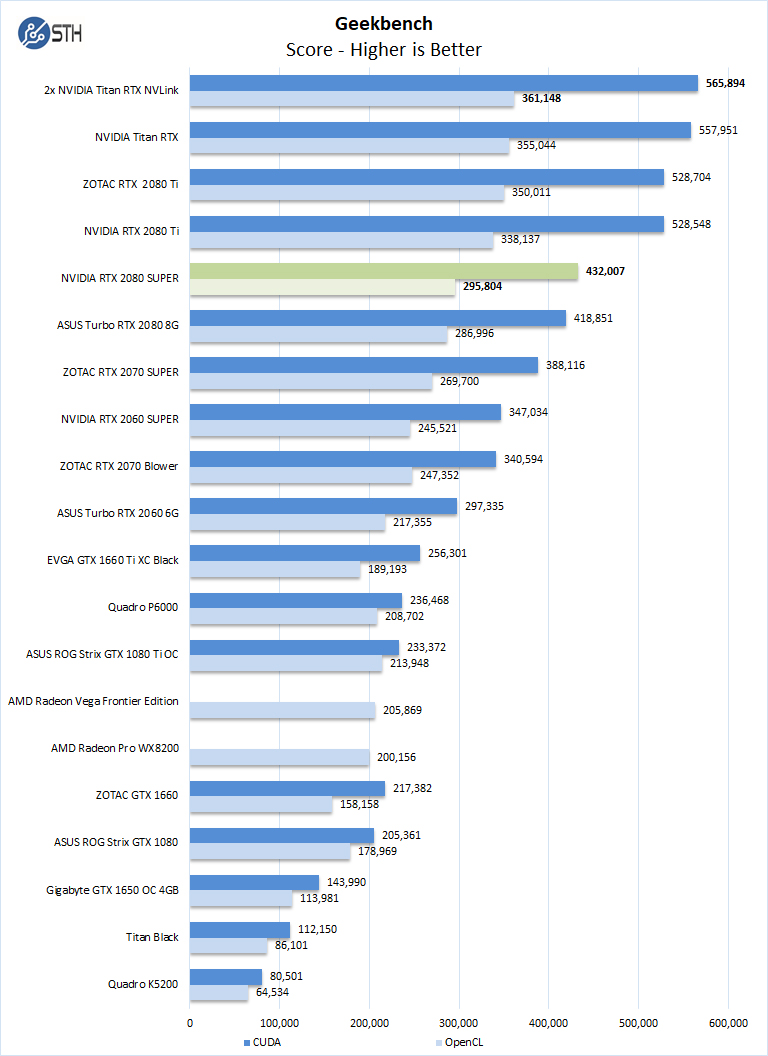
Our first compute benchmark we see the NVIDIA GeForce RTX 2080 Super achieves results just above the ASUS Turbo RTX 2080 8G. It is not quite at the RTX 2080 Ti levels.
LuxMark
LuxMark is an OpenCL benchmark tool based on LuxRender.
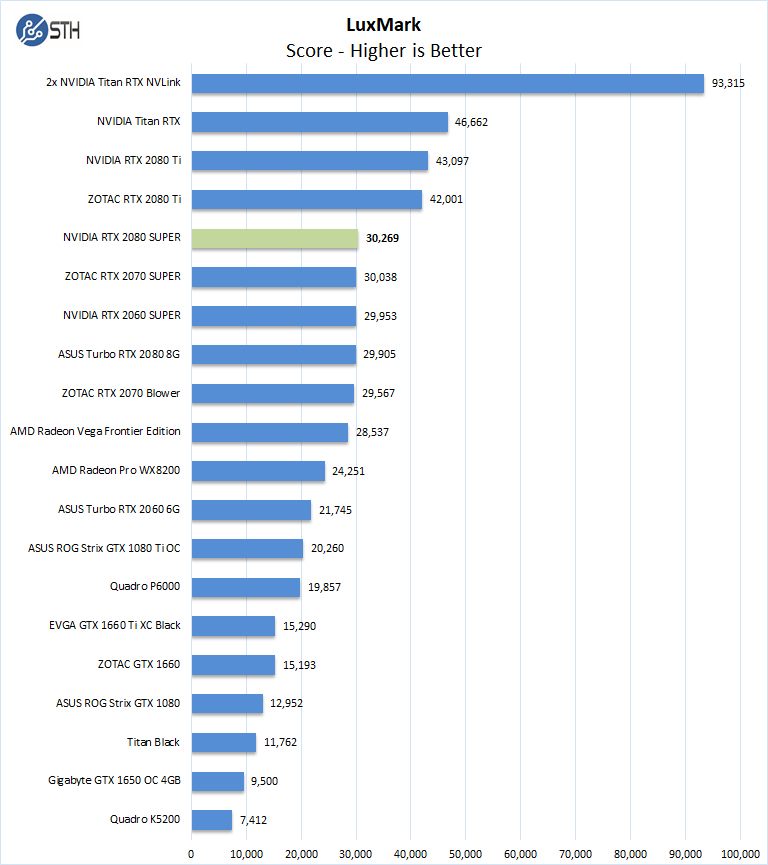
With LuxMark results, we find the NVIDIA GeForce RTX 2080 Super, in fact, all three Super series cards line up in order and fall just below the NVIDIA GeForce RTX 2080 Ti series.
AIDA64 GPGPU
These benchmarks are designed to measure GPGPU computing performance via different OpenCL workloads.
- Single-Precision FLOPS: Measures the classic MAD (Multiply-Addition) performance of the GPU, otherwise known as FLOPS (Floating-Point Operations Per Second), with single-precision (32-bit, “float”) floating-point data.
- Double-Precision FLOPS: Measures the classic MAD (Multiply-Addition) performance of the GPU, otherwise known as FLOPS (Floating-Point Operations Per Second), with double-precision (64-bit, “double”) floating-point data.
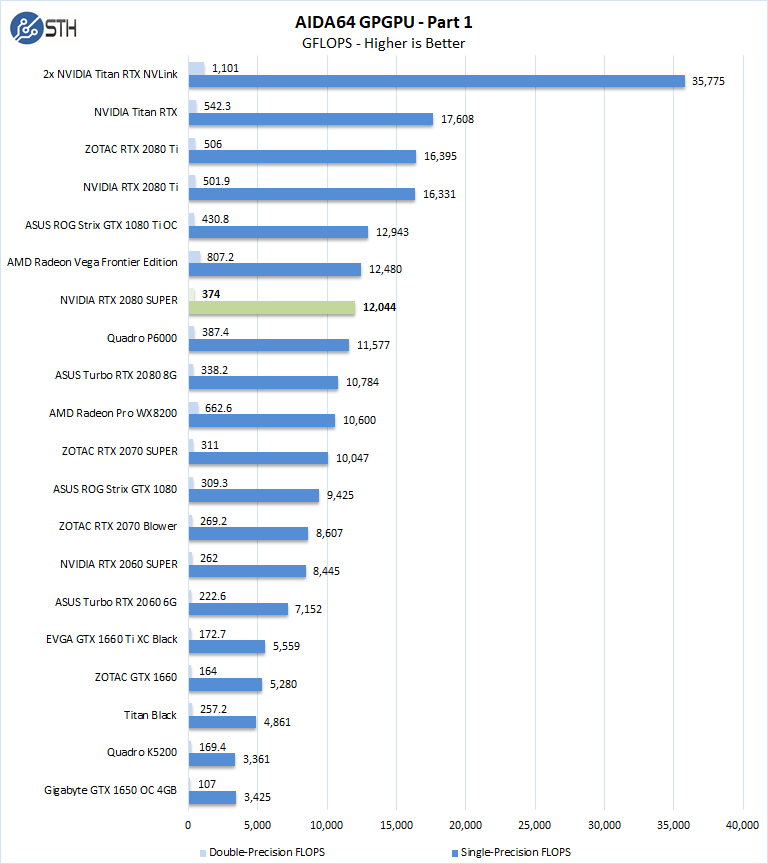
Here, the AMD Vega Frontier Edition performs extremely well. We are still awaiting AMD to get Navi driver support as we mentioned in our STH AMD Radeon RX 5700 XT and RX 5700 Review Update. That is why you do not see those numbers in our charts.
The next set of benchmarks from AIDA64 are:
- 24-bit Integer IOPS: Measures the classic MAD (Multiply-Addition) performance of the GPU, otherwise known as IOPS (Integer Operations Per Second), with 24-bit integer (“int24”) data. This particular data type defined in OpenCL on the basis that many GPUs are capable of executing int24 operations via their floating-point units.
- 32-bit Integer IOPS: Measures the classic MAD (Multiply-Addition) performance of the GPU, otherwise known as IOPS (Integer Operations Per Second), with 32-bit integer (“int”) data.
- 64-bit Integer IOPS: Measures the classic MAD (Multiply-Addition) performance of the GPU, otherwise known as IOPS (Integer Operations Per Second), with 64-bit integer (“long”) data. Most GPUs do not have dedicated execution resources for 64-bit integer operations, so instead, they emulate the 64-bit integer operations via existing 32-bit integer execution units.
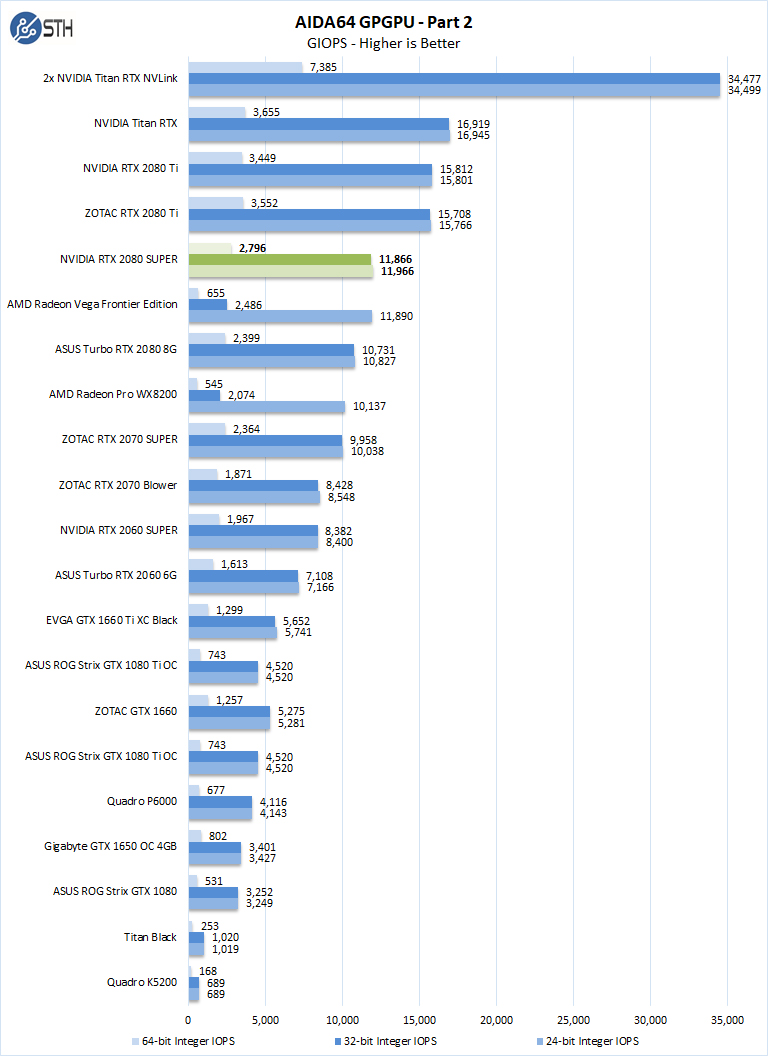
Here the NVIDIA GeForce RTX 2080 Super flips the script on the AMD Radeon Vega Frontier Edition. It shows significant improvement over the non-Super part as well.
hashcat64
hashcat64 is a password cracking benchmarks that can run an impressive number of different algorithms. We used the windows version and a simple command of hashcat64 -b. Out of these results we used five results to the graph. Users who are interested in hashcat can find the download here.
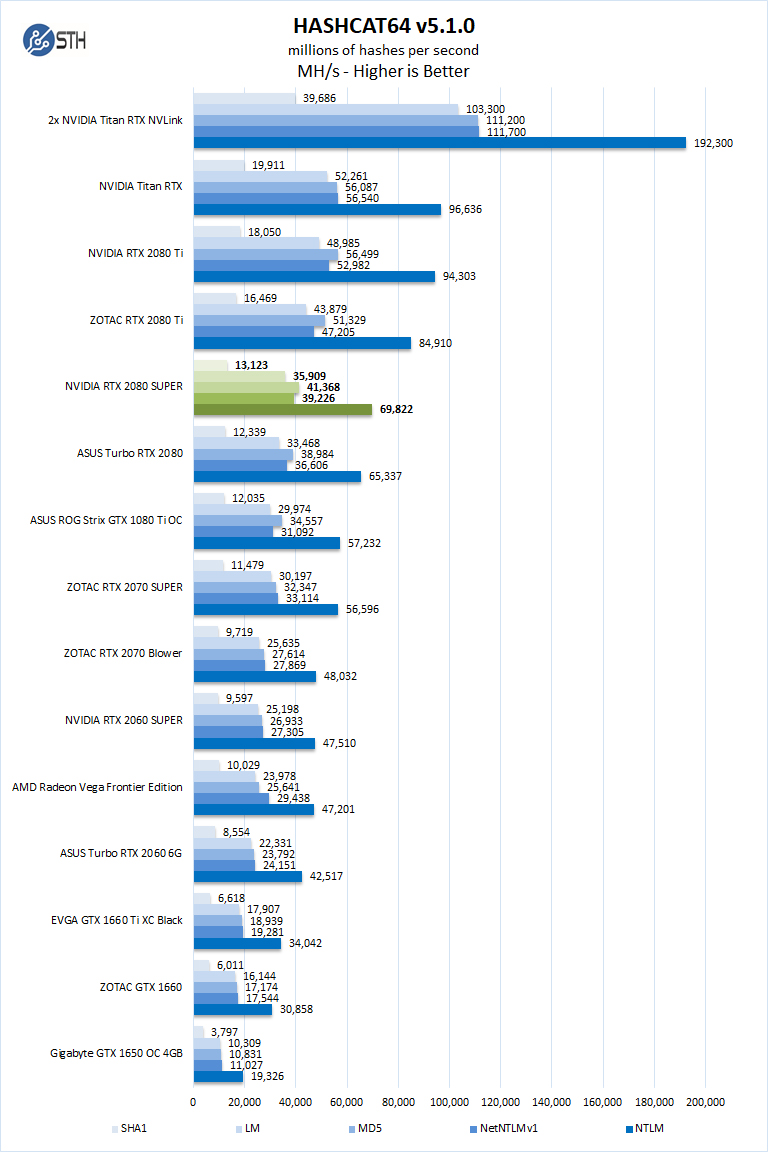
Hashcat64 is a demanding benchmark which heats up GPUs. Here we see the NVIDIA GeForce RTX 2080 Super Twin Fan again show improvement over the ASUS Turbo-RTX2080-8G.
SPECviewperf 13
SPECviewperf 13 measures the 3D graphics performance of systems running under the OpenGL and Direct X application programming interfaces.
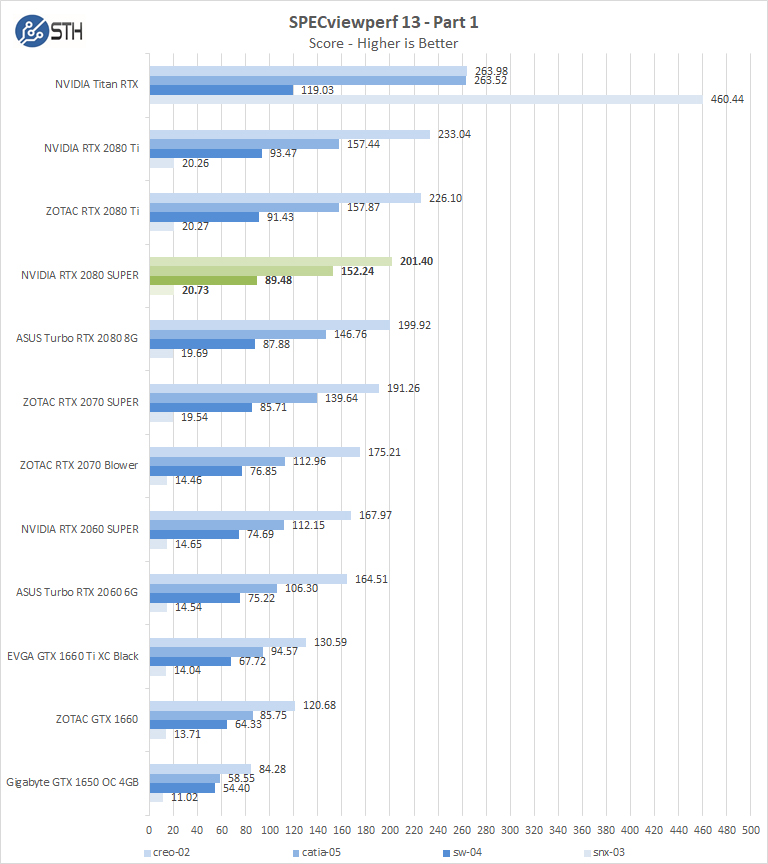
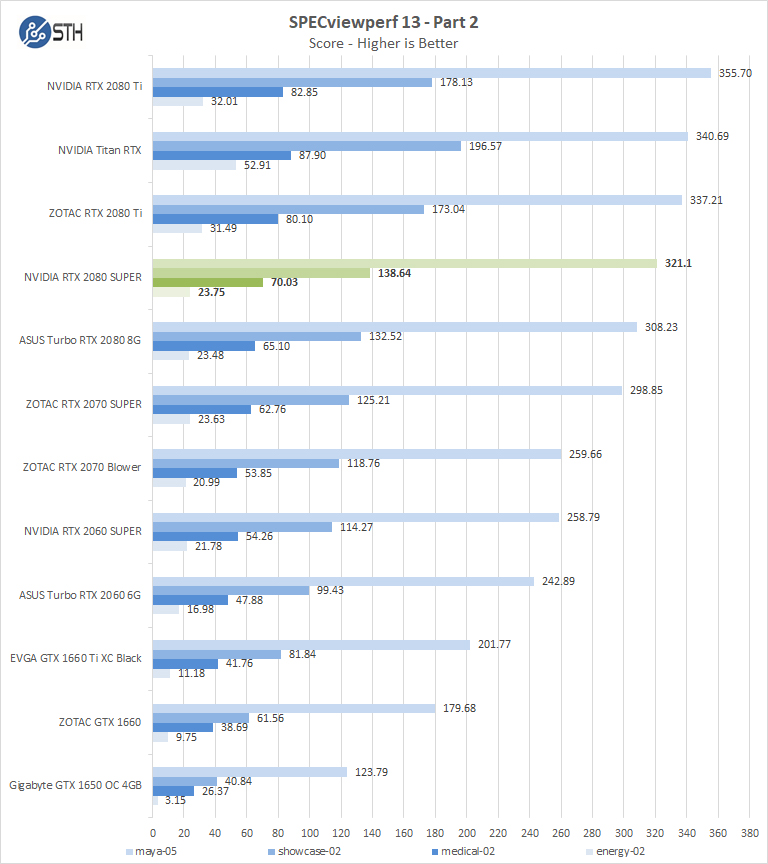
Again we see the NVIDIA GeForce RTX 2080 Super give a solid improvement.
Let us move on and start our new tests with rendering-related benchmarks.




Since the Quadro P6000 was placed on some of the performance graphs, it would have been nice to see how the RTX 2080 Super compares against the Quadro RTX5000.
GeForce RTX 2080 Super is a fucking gpu for deep learning! I really don’t recommend it!
The GeForce RTX 2080 SUPER is a pretty good gaming GPU. However, due to the supply and demand on this card, the prices are sky rocketing. You could probably find a 3070 for the same price, if not less. If you can manage to find a good deal on one, and not on any 30 series product, pull the trigger on it. In my opinion, this is a great card, but you could find better.